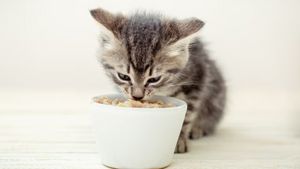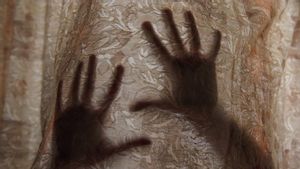YOGYAKARTA – Just like humans, cats' moods are also reflected in their eyes. Generally, the pupil size of each cat breed is the same size. Changes in the size of the eyes are associated with a number of conditions, including eye inflammation, tumors, central nervous system injury, FeLV, and neurological disorders.
Cats have a third eyelid on the inside, this is called the nictitating membrane. This membrane protects the cat's eyes from drying out and/or damage. When an anabul is sick, this third eyelid closes partially over its eye. Launching The Spruce Pets, uniquely, when the anabul is very happy it will also show the nictitating membrane.
For those of you who love cats, it is important to recognize the expression of a cat's feelings through its eyes. When they are angry, their pupils will constrict. Unlike when the anabul is excited or scared, its eyes will open wide with large pupils. A cat's eyes, which are soft and happy, will sometimes appear darker than usual.

In addition to recognizing the mood of your pet anabul through their eyes, it is important for cat owners to know the health condition of their anabul's eyes. Cats suffer from a number of eye diseases similar to those commonly experienced by humans, such as cataracts, glaucoma, and conjunctivitis or pink eye. Conjunctivitis, which is caused by the chlamydia bacteria, can be transmitted to humans. So, if you find a cat at home experiencing it, immediately provide treatment or check with a veterinarian to get proper treatment.
In cats, the iris muscles surrounding the pupil are arranged in a way that allows their eyes to narrow into a vertical slit in bright light and open fully in dim light for maximum illumination. This is why cats have much better night vision than humans. Although they cannot see in complete darkness, they can see with one-sixth of the illumination required for humans to see.
Have you ever seen a cat's eyes glow in a dark room? Behind the cat's retina is a reflective layer called the tapetum lucidum. This layer reflects incoming light and reflects it back from the cone. So that the cat can make more use of the minimal light in the room. The tapetum may also be responsible for the shiny green ball that is visible when a small amount of light hits a cat's eye.
The unique thing about cat eyes apart from those described above, is that cats cannot see directly under their noses. So, if you put food directly under his nose, he keeps looking for it before finding it with the help of his sense of smell or nose. Although they can't see up close, cats have sharp eyesight for distant objects.
The English, Chinese, Japanese, Arabic, and French versions are automatically generated by the AI. So there may still be inaccuracies in translating, please always see Indonesian as our main language. (system supported by DigitalSiber.id)













